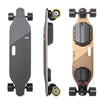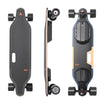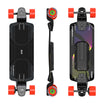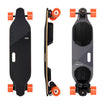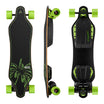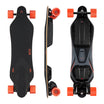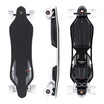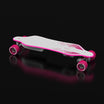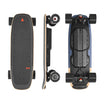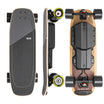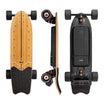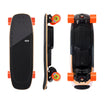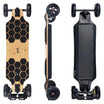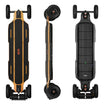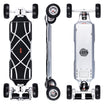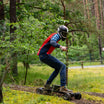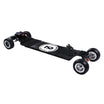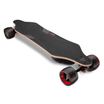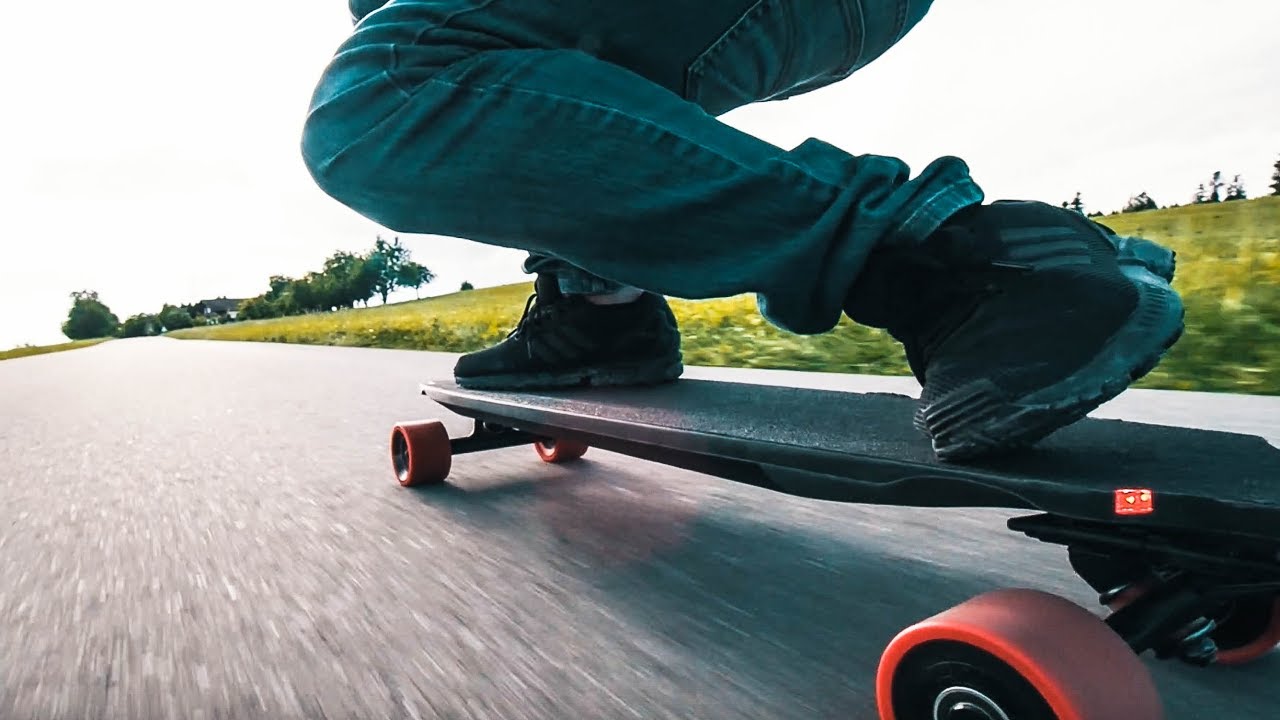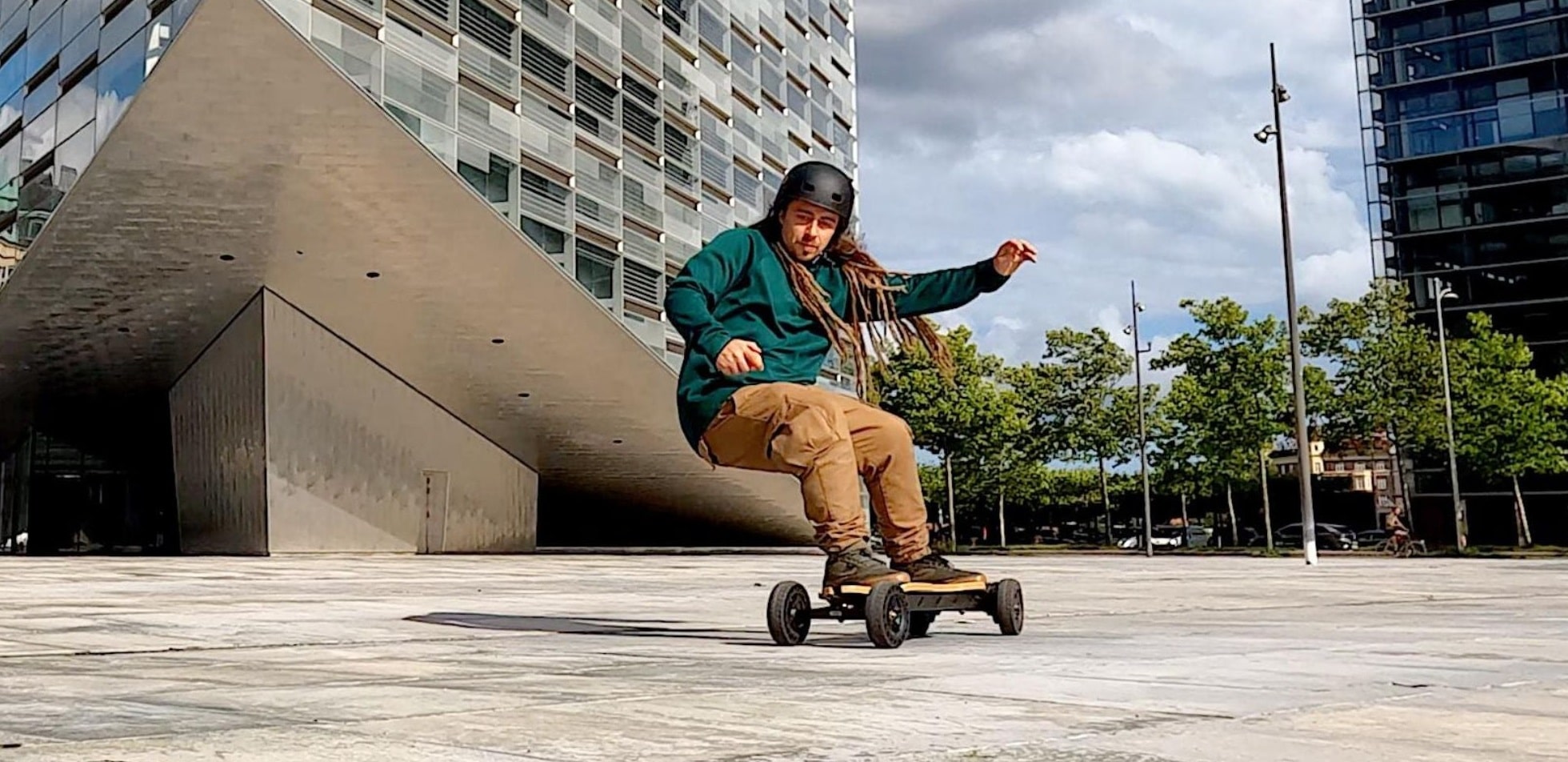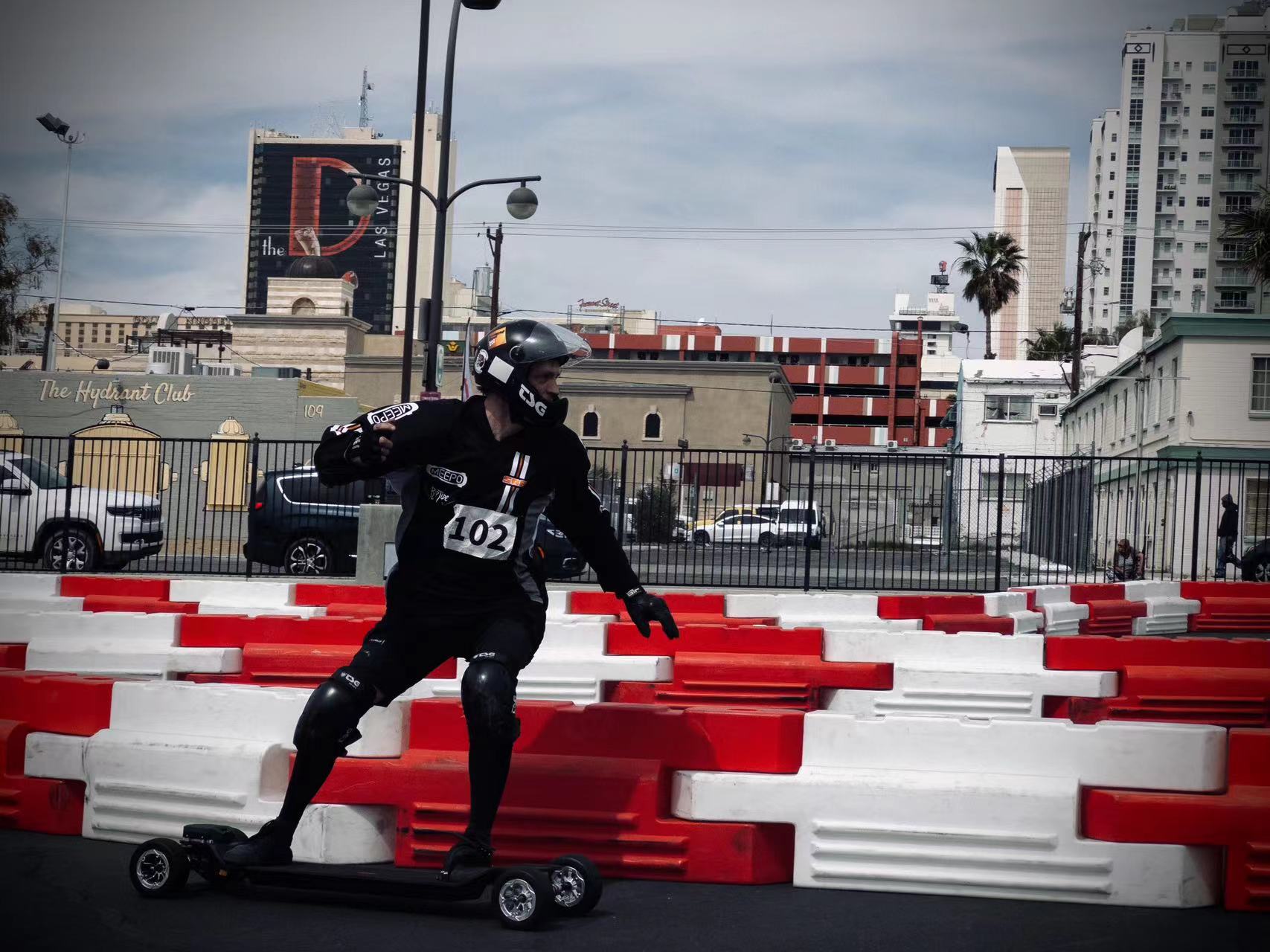Riding an electric skateboard is an exciting way to navigate the streets, offering a blend of convenience and fun. It's a skill that combines traditional skateboarding with the modern twist of electric power. If you're new to this mode of transport, you might feel a bit daunted at the thought of mastering it. However, learning how to ride an electric skateboard is more straightforward than it appears.
This guide is designed to introduce beginners to the basics of electric skateboarding. From choosing the right board to understanding essential safety gear and mastering basic riding techniques, we'll cover everything you need to know to get started. Whether you're looking to commute, explore, or simply enjoy the thrill of the ride, this beginner's guide will set you on the right path.
How Does Electric Skateboard Work?
Before moving on to riding lessons, its important to understand how the electric skateboard works in general. An electric skateboard works through a clever combination of traditional skateboarding design and modern technology. At its core, it consists of a deck, wheels, trucks, and bearings, similar to a regular skateboard. However, what sets it apart is the addition of a battery, an electric motor, and a drivetrain mechanism that connects the motor to the wheels, enabling the board to move without manual pushing.
The magic really happens with the inclusion of an electronic speed controller (ESC), which is the brain of the skateboard. The ESC manages the power flow from the battery to the motor, controlling speed and braking. Riders command the skateboard using a handheld wireless remote controller, which communicates with the ESC. By simply adjusting the throttle on the remote controller, you can speed up or slow down, providing a seamless riding experience.
Additionally, some electric skateboards come equipped with regenerative braking, which captures energy during braking and feeds it back into the battery, slightly extending the ride range. This integration of mechanical and electronic components allows for a unique and efficient mode of transportation that's both fun and practical.
Tips for Choosing the Right Electric Skateboard

Choosing your first electric skateboard is an exciting step towards embracing a new, dynamic way of moving around. For beginners, the vast array of options can seem daunting, but focusing on key features can help simplify the process. Here’s a beginner-friendly guide to selecting the right electric skateboard, ensuring a smooth and enjoyable entry into the world of skateboarding:
Determine Your Main Use: Reflect on what you primarily need the skateboard for. If it’s for commuting, look for models with longer battery life and comfort in riding over longer distances. For leisure or learning, prioritize ease of use and stability. Your purpose will significantly influence the type of board that best fits your lifestyle.
Consider the Deck Size: Beginners should lean towards electric skateboards with larger decks. These provide more stability and room for your feet, making it easier to maintain balance and control. A wider and longer deck is forgiving during the learning phase, reducing the chances of falls and improving confidence.
Battery Life Matters: The range of your skateboard determines how far you can go on a single charge. Look for a board with a battery life that matches or exceeds your daily travel distance. This minimizes the inconvenience of frequent recharging and ensures that you can reliably use your board for commutes or extended rides without range anxiety.
Understand the Motor Power: The motor determines how fast the skateboard can go and its ability to climb hills. For beginners, a moderate motor power is ideal, offering a balance between speed and manageability. High-powered models might be tempting, but they can be overwhelming and potentially unsafe for new riders.
Check Weight and Portability: If you plan to take your skateboard on public transportation, up stairs, or need to store it in tight spaces, its weight and portability become crucial. Opt for a lighter model that doesn’t compromise on durability. Some electric skateboards also feature carry handles or foldable designs for easier transport.
Selecting the right electric skateboard involves considering how each feature aligns with your needs, skill level, and lifestyle. By focusing on these key aspects, beginners can make an informed choice that enhances their skateboarding experience from day one.
Safety Gear and Precautions

For beginners learning to ride an electric skateboard, prioritizing safety is crucial. As exhilarating as it is to cruise on an electric board, the experience also comes with risks, particularly for newcomers. Wearing appropriate safety gear is essential to minimize these risks. Helmets, knee pads, elbow pads, and wrist guards can dramatically reduce the severity of injuries from falls or collisions. Additionally, beginners should start in safe, open areas away from traffic and obstacles to practice.
Understanding the basics of your board, like how to brake and turn safely, is also vital before heading into more challenging environments. Precautions such as checking your equipment before each ride and being mindful of weather conditions further ensure a safe and enjoyable learning experience. Safety measures not only protect riders but also instill confidence, making the learning process smoother and more enjoyable.
Basic Riding Techniques

This guide is specifically designed to introduce beginners to the essential techniques required for proficiently riding an electric skateboard. By understanding these core principles, you'll not only safeguard yourself but also enhance the overall quality of your riding experience. So, let's take a closer look and start learning the process of mastering basic riding techniques on an electric skateboard, step by step.
Step 1: Mastering the Stance
Your stance is the foundation of your ride. Position your feet shoulder-width apart, with the front foot near the board's front trucks and the back foot just in front of the rear trucks. This not only ensures stability but also prepares you for dynamic movements. Practice shifting your weight slightly from one foot to the other to find your balance point. The correct stance will feel comfortable and secure, giving you the confidence to start moving.
Step 2: Using the Remote Controller
The remote controller is your key to controlling the skateboard. Spend time getting to know its features: the acceleration throttle, the brake, and any speed settings. Practice pressing the throttle and brake gently to understand how sensitive they are. Holding the controller should feel natural, as it’s the interface through which you'll command your board. Experiment with the grip that gives you the best control and comfort.
Step 3: Starting Off
To begin your journey, ensure your stance is solid and you have a clear path ahead. Lightly press the acceleration on the remote controller, feeling the board start to move beneath you. Resist the temptation to go fast too soon. Instead, focus on maintaining balance as the board accelerates. Your knees should be slightly bent to absorb any vibrations or bumps, keeping your center of gravity low.
Step 4: Stopping
Understanding how to stop safely is as important as starting. To decelerate, gradually release the acceleration throttle and then gently apply the brake on your remote controller. It's crucial to start this process well ahead of where you actually need to stop, as electric skateboards can have a significant stopping distance, especially at higher speeds. Practice stopping from different speeds to get a feel for how your board responds.
Step 5: Turning
Turning requires a blend of balance and subtle weight shifts. Initiate a turn by leaning gently into the direction you want to go, using your feet to apply pressure to the side of the board you're turning towards. The sharper the turn, the more you’ll need to lean and shift your weight. Use the remote to adjust your speed for tighter turns, slowing down to make them more manageable.
Step 6: Practicing Falling Safely
While the goal is to stay on your board, knowing how to fall can prevent serious injuries. Practice in a safe, grassy area, learning to roll on impact to distribute the force of the fall away from your bones and onto your muscles. Wearing full protective gear, including a helmet, knee pads, elbow pads, and wrist guards, is non-negotiable.
Mastering these techniques takes time and patience. Each step builds upon the last, creating a foundation of skills that will enhance your electric skateboarding experience. Regular practice in a safe, controlled environment is the best way to improve, making each ride smoother and more enjoyable than the last.
Understanding Electric Skateboard Controls
Understanding the controls of an electric skateboard is key to mastering its ride. The heart of these controls lies in the handheld remote, which wirelessly connects to the skateboard. This remote allows riders to accelerate, decelerate, and brake with the push of a button or the slide of a throttle. Familiarity with the remote's responsiveness is crucial, as it directly influences the skateboard's speed and handling.
Additionally, some models offer features like speed modes, allowing riders to set a maximum speed limit for safer riding. Learning to use these controls effectively ensures a smoother, more controlled ride, making the experience both enjoyable and safe for beginners. Mastery over these controls not only enhances the riding experience but also boosts confidence, as riders feel more in tune with their skateboard's capabilities and limitations.
Riding Etiquette and Legal Considerations

Riding an electric skateboard involves more than just mastering the controls and techniques; it also requires understanding and adhering to riding etiquette and legal considerations. This ensures not only your safety but also the safety of those around you. Always ride on the correct side of the path, signal your turns, and be mindful of pedestrians and other riders. It’s crucial to respect shared spaces by maintaining a safe speed and keeping noise to a minimum.
Legal considerations vary by location, so it’s important to research and comply with local laws regarding electric skateboards. These can include restrictions on where you can ride, speed limits, and the requirement for protective gear. Some areas may require electric skateboarders to follow the same rules as cyclists, while others have specific regulations. Ignorance of these laws not only puts you at risk of fines but can also endanger your and others' safety. Being informed and respectful of these guidelines ensures a harmonious coexistence with all road and path users, promoting a positive image of the electric skateboarding community.
Maintenance and Troubleshooting
Regular maintenance and troubleshooting are pivotal for ensuring your electric skateboard remains in optimal condition, safeguarding a smooth and safe riding experience. Start with routine checks, focusing on the battery level to ensure sufficient charge for your journeys and inspecting the skateboard for any signs of wear or damage, such as to the deck, wheels, and bearings, before and after use. Keeping your board clean is also crucial; dirt and debris can impede performance and potentially cause damage over time.
Learn to identify common issues like loose connections or worn bearings and how to address them. For problems that seem complex or beyond basic fixes, don't hesitate to seek professional assistance. A proactive approach to maintenance and troubleshooting not only prolongs the life of your electric skateboard but also enhances the overall quality of your rides.
Wrap Up!
Electric skateboarding is an exciting journey, blending traditional skateboarding with modern technology for a fun and convenient way to get around. This beginner's guide has shared everything from selecting the right board, understanding how it works, to safety tips and basic riding techniques. Remember, every expert started as a beginner.
With patience and practice, navigating the streets on your electric skateboard will become second nature. It's more than just transportation; it's about embracing a new lifestyle, filled with adventure and community. Keep safety in mind, respect others on the path, and let your curiosity lead the way. Electric skateboarding opens up a new world of possibilities, making every ride an adventure.

